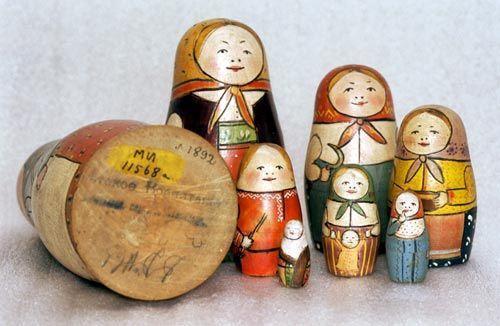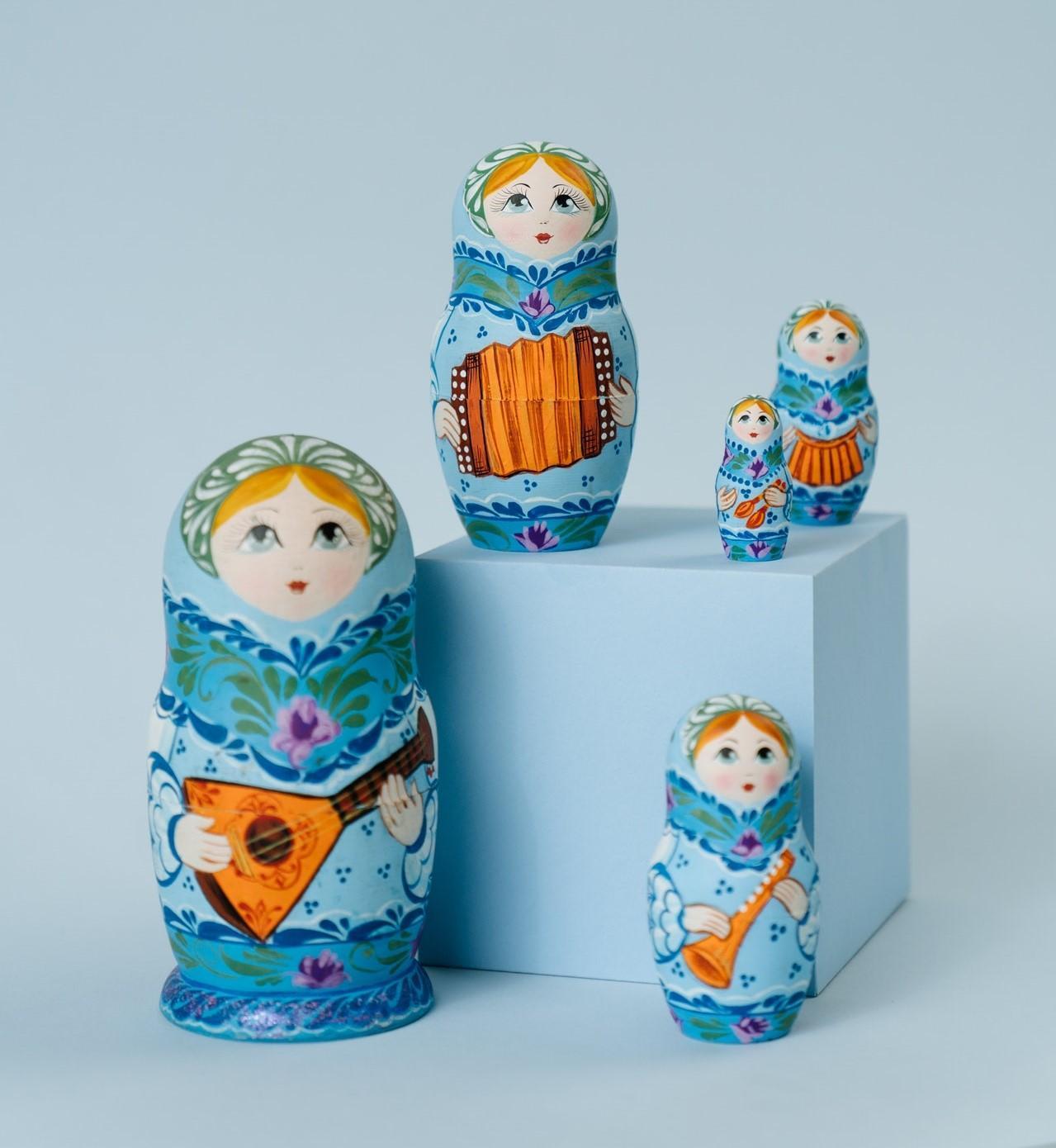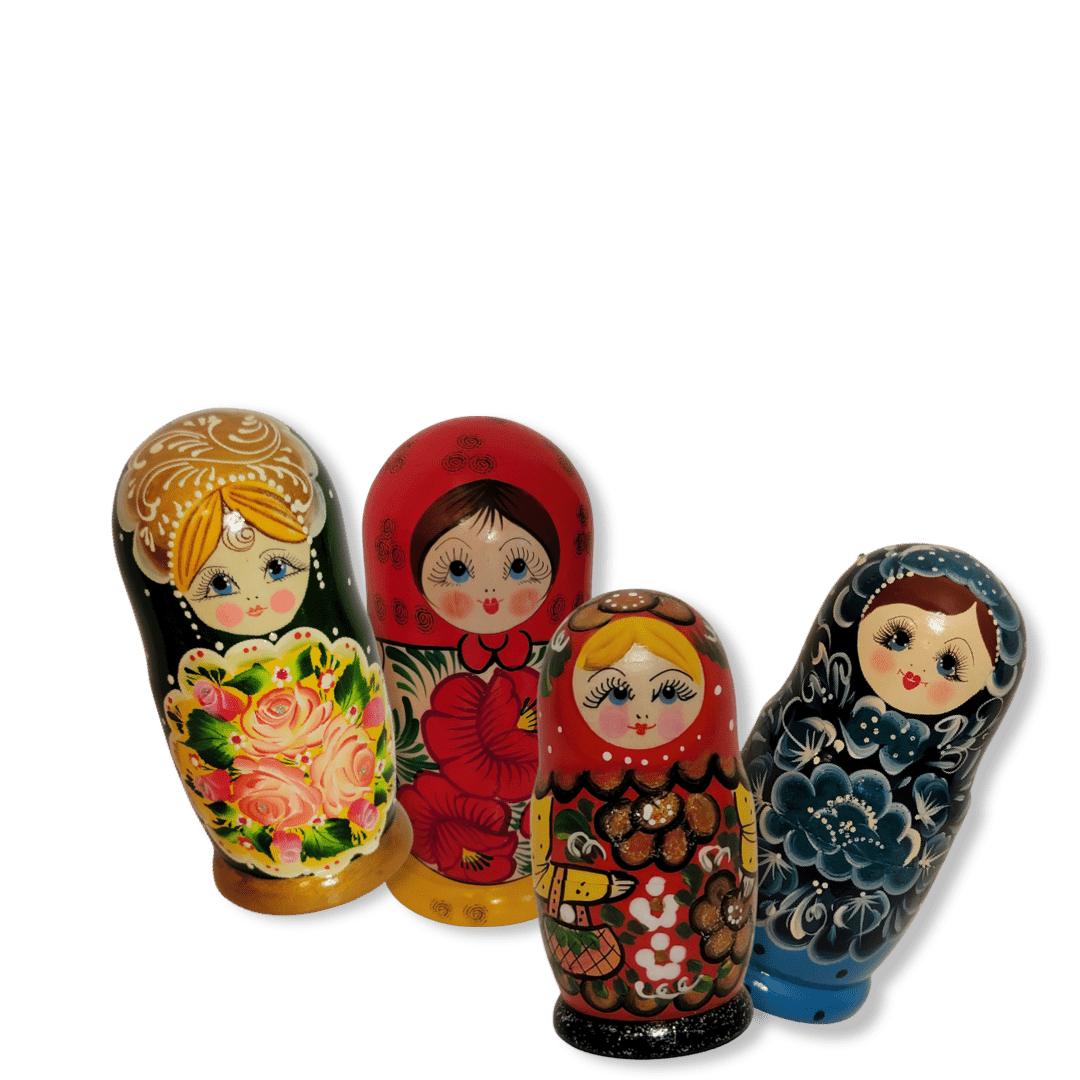
Russian doll or Matryoshka
The Russian doll, a symbolic Russian object, is even taught in school. Indeed, "At school, 12-year-old Russians also learn that the matryoshkas of their childhood" in fact symbolize the Russian character, the Russian soul, the basic Russian values: motherhood, family, collectivism, unity and warmth. human ”, according to a guide for social science teachers. "- La Presse
How to make a Russian beauty?
The making of Russian dolls (Matryoshka)
First, an appropriate type of wood is chosen. Due to its flexibility, lime is generally chosen, often less than alder or birch. Trees are usually cut in early spring. Part of the bark is removed so that the wood does not crack during drying. Then the logs are stored and dried for several years in a well-ventilated place. It is necessary to start treating the wood when it is neither dry nor soft. Each part goes through more than a dozen operations. The smallest doll - inseparable - is made first. When the "baby" is ready, we move on to the next figurine, in which the first one will be nested. The next part is processed and cut according to the required height. The wood is then removed from the inside of the two parts of the second doll so that the smaller doll fits snugly inside. Then the process is repeated for a larger doll, which will include the previous two, etc. The number of dolls can be different. At the end of the process, each doll is coated with oil varnish. After drying and final polishing, the artist proceeds with the varnishing. Gouache and oil paints are used as paints.
Provenance du mot Matriochka
Le mot matriochka est dérivé du prénom féminin Matriona, traditionnellement associé à une femme russe de la campagne. prénom de même étymologie que mère et matrone. Ainsi, une poupée Matriochka symbolisait une mère avec sa famille, ses enfants
The history of Russian dolls
This typical Russian object has a relatively recent history. Indeed, the first appearances would be in the 1890s. It was after the World's Fair in Paris in 1900 where Russian dolls won the bronze medal that they gained popularity.
Originally from Japan
In the 1980s, with the Orient becoming fashionable in Russia, a famous Russian industrialist, Savva Mamontov, brought back from Japan a series of Seven Deities of Boheur. Painter Sergei Malioutin creates a Russian version of the toy in his craft workshop.

Pour en savoir plus sur l'histoire des poupées Matriochka
World record
Plus grande poupées russes au monde
Established on April 25, 2003 and hand painted by Youlia Berenznitskaia, the set consists of 51 nested dolls, with the largest doll having a height of 53.97cm and the smallest a height of 0.31cm. Once the 51 Russian dolls are aligned together, they measure 3.41m in length.

Reference : World Guinness Record
51
russian dolls
53.97cm
Biggest doll in the set
0.31cm
Smallest doll in the set
Et les plus petites poupées russes au monde...
Il n’existe pas de record officiel du plus petit ensemble de poupées russes au monde, mais voici la vidéo d’une artiste qui affirme avoir le record et met au défi quiconque de la corriger.
Themes in dolls
Originally representing Russian women in traditional clothes, today Russian dolls address many themes.
- Religion
- Fairy tales
- Political figures
- Animals
- Important holidays (Christmas, Easter)
- Public figures


Devenu un emoji
En 2020, l’Unicode Consortium à approuvé la poupée russe comme nouveau emoji. La matriochka à été présenté au consortium par Jef Gray comme un symbole non-religieux, non-politique, représentant la culture de la Russie.

Discover our range of Russian dolls
Whether traditional, themed or educational Russian dolls, you will certainly find one to your liking.
